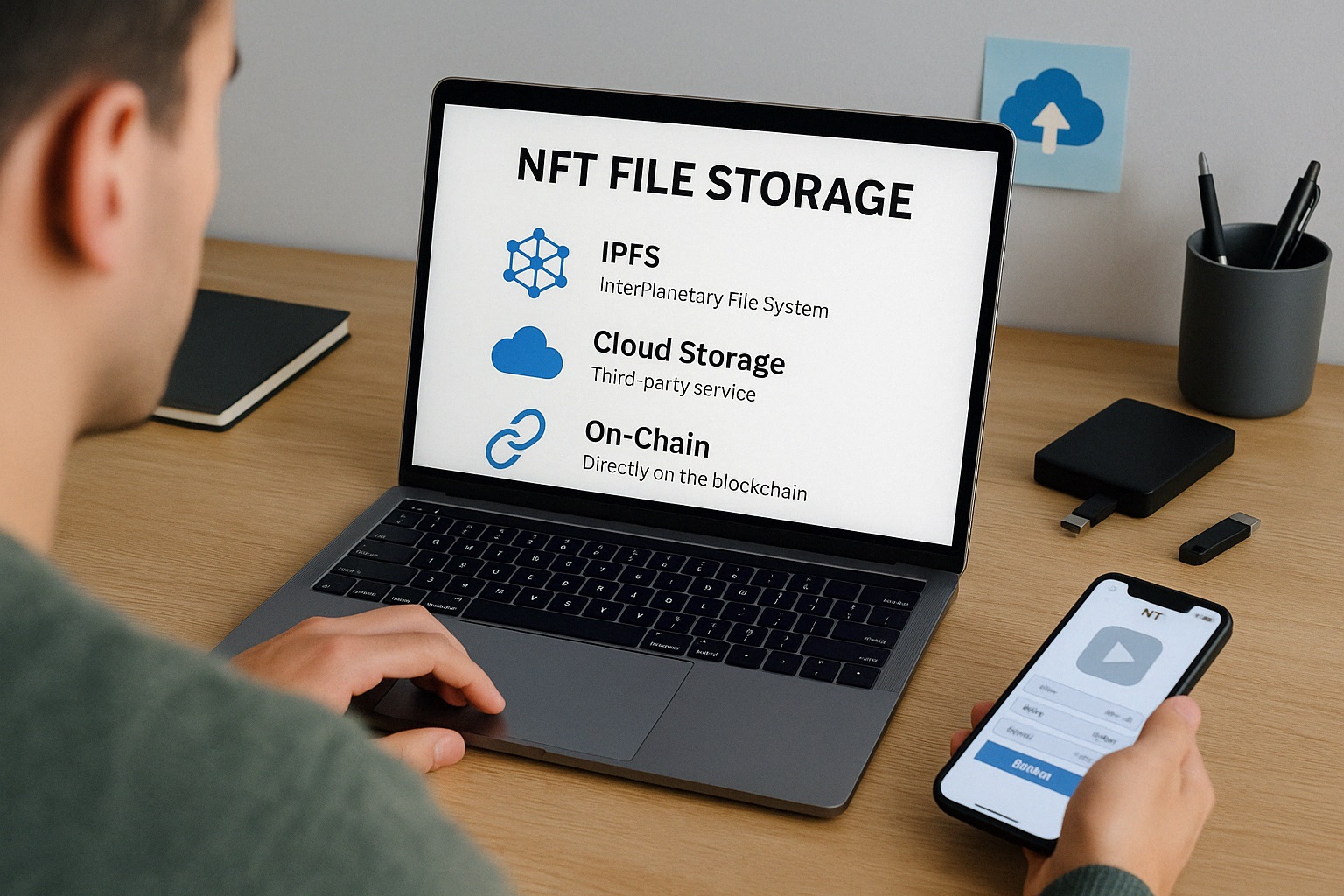When you purchase or create an NFT, you might assume that the artwork or file is permanently stored on the blockchain. But in most cases, that’s not entirely true. While the token itself lives on the blockchain, the media file—the image, video, music, or animation—is usually hosted elsewhere. That’s why understanding where NFT files are stored really matters. It affects how long your NFT lasts, how secure it is, and how well it can be accessed over time.
For collectors, creators, and developers, choosing the right file storage method can make the difference between a long-lasting digital asset and a broken link. Not all storage solutions are equal. Some are decentralized and resilient, while others depend on third-party servers that can go offline.
Why NFT Storage Matters
The metadata of an NFT usually includes a link to the media file. If that link points to a file stored on a server that disappears, the NFT could become unusable. You’d still own the token, but the artwork or content tied to it would be lost. That’s why it’s important to know your options when it comes to file storage.
This article looks at the most common ways NFT files are stored, comparing their strengths and weaknesses. Whether you’re minting your first project or adding to your collection, this overview can help you make smarter choices that protect the value and integrity of your NFTs.
Centralized Storage
The simplest method is hosting files on traditional cloud services like AWS, Google Cloud, or a personal server. These platforms are fast and familiar, and they make it easy to update or replace files.
But there’s a major drawback. Centralized servers can go offline, change policies, or be shut down entirely. If a file stored this way becomes unavailable, the NFT that points to it will appear broken. Centralized hosting also means trusting a single provider to maintain access and file integrity.
While this method is common in early or casual projects, it’s generally considered risky for long-term storage. Unless regularly maintained, NFTs tied to centralized files may not stand the test of time.
IPFS (InterPlanetary File System)
IPFS is a decentralized storage system that many NFT platforms rely on. Instead of storing files on a single server, IPFS breaks them into smaller pieces and distributes them across a network. Files are referenced by a unique hash, ensuring their integrity and allowing anyone on the network to retrieve them.
This makes IPFS much more resistant to failure. If one node disappears, others still hold the file. It’s a favorite among developers and collectors who want durability without giving control to a single provider.
However, IPFS isn’t automatically permanent. Unless a node keeps hosting a file, it could eventually go offline. That’s why many users pair IPFS with pinning services like Pinata or NFT.storage. These services commit to keeping your content available on the network.
IPFS strikes a good balance between decentralization and accessibility, especially when backed by reliable pinning.
Arweave
Arweave offers a permanent, decentralized storage solution designed to preserve files forever. Unlike IPFS, which needs regular pinning or hosting, Arweave stores data with the promise that it will remain accessible indefinitely.
This is made possible by a system where users pay a one-time fee to store data permanently. That upfront cost covers long-term availability, which makes Arweave an attractive option for NFT creators who want to guarantee their work will never vanish.
Some popular marketplaces and NFT platforms integrate Arweave directly, storing both the media and metadata permanently. While it’s less flexible for updating content after minting, it provides peace of mind for buyers and collectors.
For artists aiming to build lasting legacies, Arweave is one of the most trusted solutions available today.
On-Chain Storage
In rare cases, NFTs store all their data directly on the blockchain. This is known as on-chain storage, and it means the image, animation, or metadata exists entirely within the token’s smart contract.
This method guarantees permanence and decentralization, as it doesn’t rely on any external files or services. Everything lives on the blockchain itself.
The challenge is size. Blockchains like Ethereum charge gas fees based on how much data is stored. Storing large files can become very expensive. That’s why most on-chain NFTs are simple in format—like pixel art or generative designs created with code.
Despite the limitations, on-chain storage is the most secure and independent option. For collectors who value full decentralization, these NFTs are often considered especially robust.
Hybrid Approaches
Many projects use a combination of storage methods. For example, metadata might be stored on-chain, while the media file lives on IPFS or Arweave. Some creators even include backup links to cloud storage or mirror their files across multiple networks.
This layered approach can offer both flexibility and reliability. It helps ensure that if one storage method fails, others can fill the gap.
As the NFT space grows, more projects are blending technologies to give users the best of both worlds—speed, permanence, and decentralization.
NFTs are more than just tokens—they’re gateways to digital content. And where that content lives matters. Whether you’re minting a piece of generative art or collecting rare media, choosing the right file storage method helps protect the value and integrity of what you own.
Understanding how different systems work lets you build and collect with more trust and care. After all, digital permanence depends not only on the blockchain but also on where and how your assets are stored.

No Responses